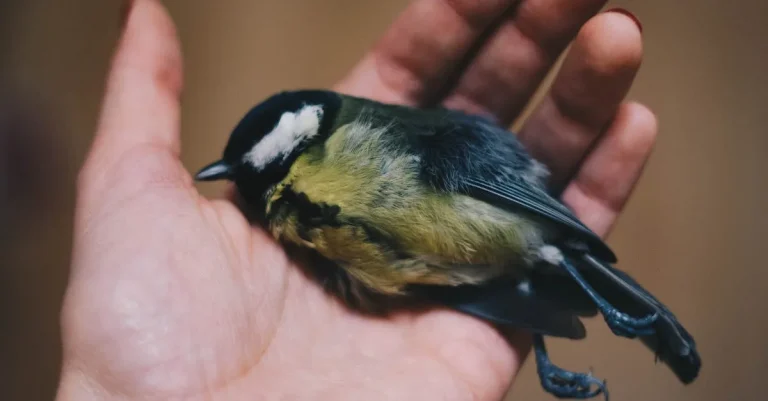If you’ve ever seen a gleaming gold beetle, you may have wondered what deeper meaning or symbolism it holds. Gold scarab beetles have fascinated humankind for millennia. From Ancient Egyptians who saw the dung beetle as an earthly representation of cosmic rebirth and renewal, to modern mystics who interpret the gold beetle’s iridescence as carrying divine light into the world, these tiny creatures have inspired awe and contemplation across cultures and eras.
In this in-depth guide to the spiritual wisdom of golden beetles, we’ll cover everything you need to understand about the symbolism, mythology, and meaning behind these radiant insects.
Scarab Beetles in Ancient Egyptian Religion and Myth
Khepri – The Egyptian God of Creation and Rebirth
Khepri was the Egyptian God who personified the rising sun. He was imaged as a scarab beetle or as a man with a scarab beetle head. In Ancient Egyptian mythology, Khepri buried his golden green scarab beetle eggs under the ground which symbolized resurrection and new life.
The idea of new life was inspired by scarab beetles emerging from their ball-shaped dung nests as if reborn. Khepri thus became a symbol for creation and rebirth.
The Solar Cycle and Regeneration
The association of scarab beetles with the cycle of life, death, and rebirth made them particularly relevant to funerary practices in Ancient Egypt. The solar cycle of the rising and setting sun was linked to the cycle of life, death, and rebirth. The scarab beetle represented this cycle.
Scarabs served as symbols of the perseverance of life beyond death.
The scarab’s habit of rolling dung balls to lay eggs in was compared to the sun god rolling the solar disk across the sky. The solar cycle was divine affirmation of regeneration after physical death, where life triumphs over death.
Heart Scarabs and the Afterlife
Heart scarabs were made of green stone and placed on the chest of the deceased before the mummy was wrapped. These “heart scarabs” represented the image of the scarab god Khepri, who the Egyptians believed would help them transform and resurrect in the afterlife.
They provided protective amulets for the deceased, meant to protect and preserve their immortality.
According to Egyptian myths, the god Osiris was resurrected into eternal life after he was murdered by his brother Seth. The scarab beetle came to symbolize this myth of resurrection, and the Egyptian belief that death is just the beginning of a more glorious eternal existence.
Just like the scarab beetles emerge from their burial balls, Egyptians would also emerge from their tombs into a more perfect afterlife.
Golden Beetles in Esoteric and Occult Traditions
Alchemical Transformation in European Occultism
In medieval European alchemy, the golden scarab beetle was a profound symbol of magical transformation and spiritual purification. Alchemists saw the scarab’s ability to generate life from dung as analogous to their magical process of transmuting lead into gold.
The scarab’s golden sheen represented the perfected state they sought through their Great Work.
References to scarabs appear in early alchemical texts such as the 17th century Atalanta Fugiens. Prominent alchemists like Paracelsus and Jan Baptist van Helmont used scarab symbolism in their writings and diagrams.
Some occult groups used live scarabs in rituals seeking mystical revelation of alchemical secrets.
The Golden Scarab in Freemasonry and Rosicrucianism
In Freemasonry’s symbolic Lodge rituals, the scarab represents the sun’s life-giving power. This ties into Masonic solar symbolism around spiritual illumination, wisdom and rebirth. According to Masonic historian John Sebastian Marlowe Ward, the scarab relates to Masonry’s death and resurrection theme.
The Rosicrucian movement, influenced by Hermeticism, also adopted the scarab as a symbol of Spencer Lewis called the scarab the emblem of the immortality of the body, protected and fed by the ever-renewing power of the sun.
Some Rosicrucian groups use the scarab in ceremonial rituals to activate solar-spiritual forces.
Scarabs in Theosophy and Anthroposophy
In her esoteric writings, Helena Blavatsky – founder of the Theosophical Society – connected the scarab to solar symbolism around spiritual self-realization. She claimed the scarab represented an emblem of the resurrection of the body and the immortality of the soul.
Rudolph Steiner, who founded the spiritual movement of Anthroposophy, also referenced the scarab’s rich symbolic meaning. He highlighted the scarab’s connection to human spiritual development, with its stages of larvae, pupa and winged insect analogous to the spiritual evolution of the human soul.
Metaphysical Properties of Golden Beetles
Light Transmission and the Seventh Chakra
The vibrant golden hue of these mystical beetles connects them to the energy of the sun. Just as the sun radiates life-giving light and warmth, golden beetles are said to transmit spiritual light to those who come into contact with them (1).
Through their illuminating energy, golden beetles may activate and balance the crown chakra, the seventh energy center located at the top of the head (2). This chakra governs higher consciousness and our connection to the divine realm.
As conduits of cosmic light, golden beetles remind us to open our crown chakra to receive inspiration, wisdom and mystical insight from above. Their resplendent glow mirrors the warm golden-white light associated with elevated states of spiritual awareness.
By awakening our higher perceptual abilities, golden beetles help unfold our intuitive gifts and latent psychic talents.
Activation of Solar Plexus and Manifestation
The vibrant golden energy of these sacred beetles also stimulates the third chakra, known as the solar plexus (3). Located in the upper abdomen, this energetic center governs self-confidence, personal power, and manifesting abilities.
Golden beetles infuse our solar plexus with the glowing warmth and radiance of the sun, boosting drive, charisma and leadership skills.
By activating the manifestation vortex of the third chakra, golden beetles increase our capacity to magnetize abundance and manifest our heart-felt desires. Their brilliant metallic bodies reflect the Sun’s creative life-giving properties, said to increase fertility and aid new beginnings (4).
Grounding Spiritual Insight into Material Reality
As winged creatures that fly between Heaven and Earth, beetles symbolize the integration of spiritual and material planes (5). Although golden beetles inhabit an ethereal sun-drenched realm, their grounded earth-born qualities enable them to translate lofty visions into practical application.
By fusing inspiration and imagination with logical planning and organization, golden beetles teach us to manifest heavenly insights on the physical plane.
Golden beetles embody the reciprocal relationship between spiritual enlightenment and material existence; neither domain can thrive without the harmonious balance of the other. As alchemical creatures, they represent the mystic process of transmuting leaden consciousness into golden awareness.
By anchoring luminescent spiritual truths into the “soil” of everyday life, golden beetles help co-create Heaven on Earth.
Myths and Legends of Sacred Gold Beetles Worldwide
Japanese Myths of Gold Coins and Fortune
In Japanese folklore, golden beetles known as kogane-mushi were seen as harbingers of good fortune and prosperity. There are myths of poor villagers coming across these glittering insects in fields and forests, taking them as an omen to dig in that spot, where they would uncover buried treasure troves of gold coins and precious gems.
These stories represent the beetle’s brilliant sheen and connection to wealth and abundance in nature. Finding a kogane-mushi was believed to lead one to fortune, much like a rainbow leads to a pot of gold.
Tradition holds that homes decorated with its likeness will attract positive energy and success.
Ma’at’s Feather and Truth in Ancient Egypt
In ancient Egypt, the golden jewel scarab or beetle (scarabaeus sacer) was a solar symbol associated with rebirth and regeneration. According to myths, the young scarab god Khepri rolled the sun across the sky like a ball of dung, renewing it daily.
The scarab amulet also represented the concept of Ma’at – truth, justice and cosmic order upheld by the goddess Ma’at. Her feather was weighed against one’s heart after death. If virtuous, one could enter the afterlife. The golden beetle encouraged the living to be truthful and fair.
Jeweled Scarab Talismans in Tibet and India
In Tibet and India, golden beetle motifs have long been used in jewelry believed to hold protective qualities. Tibetan dzi stones – etched agate beads resembling scarabs – were worn as amulets warding off harm.
Meanwhile Mughal royalty and nobility wore lavish gem-studded beetle brooches and pins called jeweled scarabs to project prestige, valor and spiritual potency. The scintillating gold and gems embodied the scarab’s mystical power and solar brilliance.
How to Decode the Message of a Gold Scarab Messenger
Assessing Physical Characteristics and Landscape
When encountering a gold scarab beetle, contemplating its physical form and surroundings can reveal deeper meaning. Note details like its size, coloration, and movement. Examine whether it appears alone or among a group, as well as features of the landscape where it arrives.
For example, finding a large, vibrant golden beetle after a period of struggle may signal a fortuitous upswing is imminent.
Understanding the Context and Timing of the Sighting
Contemplate what was happening in your life when the scarab appeared. Did it arrive at a transition point when you were seeking insight about relationships, career, or other personal matters? The scarab’s arrival is unlikely to be random, so reflect on your circumstances, readiness for change, recent dreams or intuitions.
Be receptive to messages the scarab may impart about topics preoccupying your thoughts. Additionally, assess if the timing seems auspicious or ominous—such as appearing at sunrise or sunset, on a birthday or holiday, during profound grief or joy. Context offers clues.
Methods of Contemplation and Extracting Insight
Be open to wisdom from unexpected messengers like the golden beetle. Set a meditative intention to connect deeply with its significance for you. Contemplative activities like journaling, drawing, or dialoguing with the scarab symbol in your imagination can help crystallize insight.
Some questions to ponder:
- What personal strengths, attributes, or potentials might this scarab mirror back to me?
- How does its arrival align with major themes or events in my life?
- What obsolete mindsets or behaviors may be dying away as something new emerges?
Ultimately, scarab symbolism reminds us to embrace life’s cycles of death and rebirth. With an alert yet relaxed mind, we can learn to recognize and trust divine support offered by scarab messengers appearing just when we need them.
When revelations surface, give thanks for the blessing of their guidance lighting your way forward through both darkness and joy.
Conclusion
If you’ve spotted a golden beetle or two lately, there may well be a message for you encoded in their radiance. By examining the rich symbolic legacy these creatures have left, we better equip ourselves to decode any spiritual communications from scarab messengers.
Gold beetles have long served as shining emissaries bridging the terrestrial and celestial. Learning their mythologies and metaphysics grants us perspective to orient ourselves within the great cosmic cycles governing material existence.
If a golden beetle crosses your path, celebrate the synchronicity – and listen closely!






